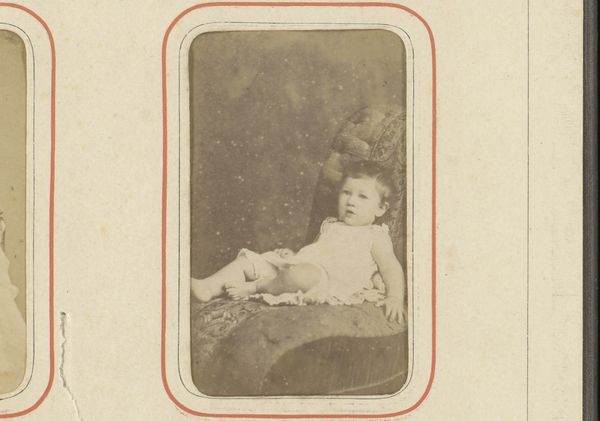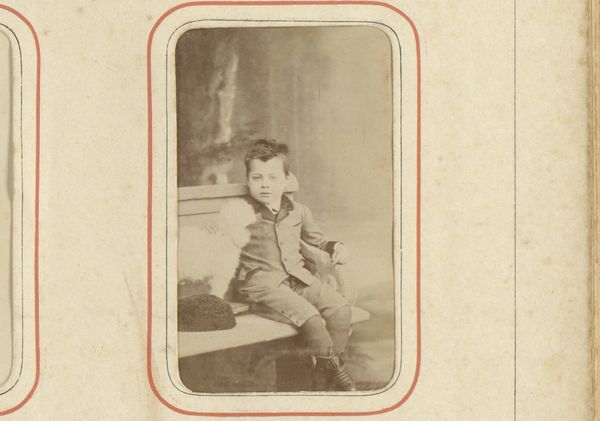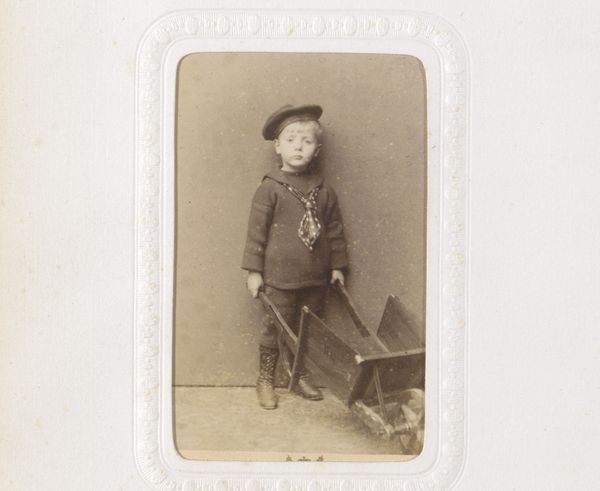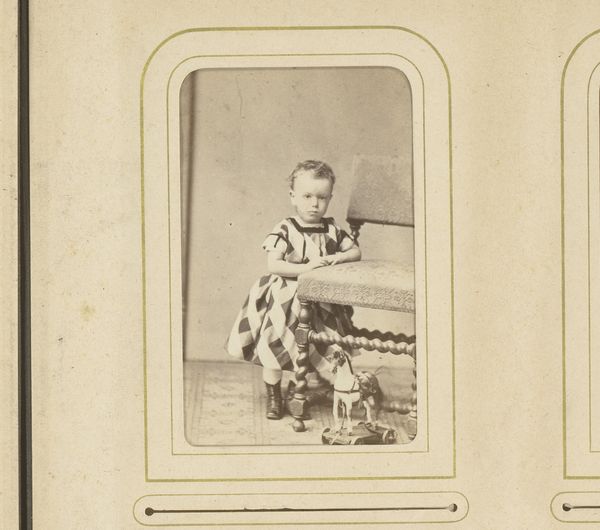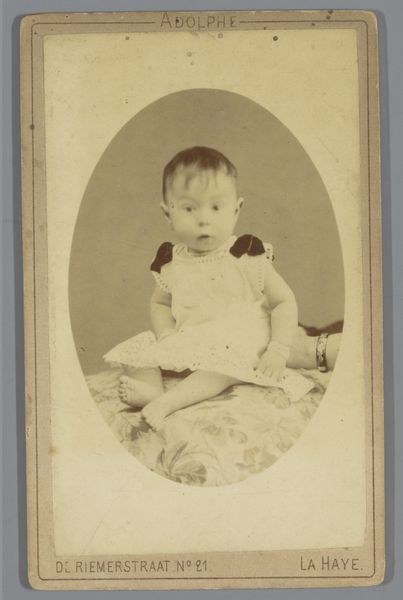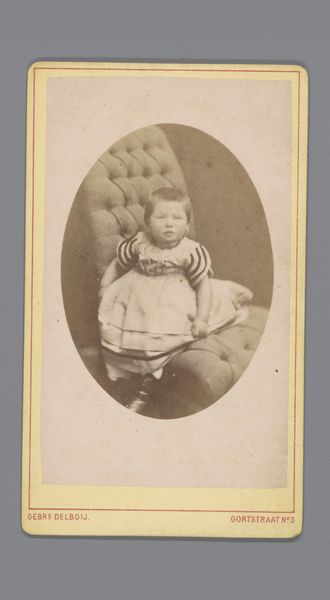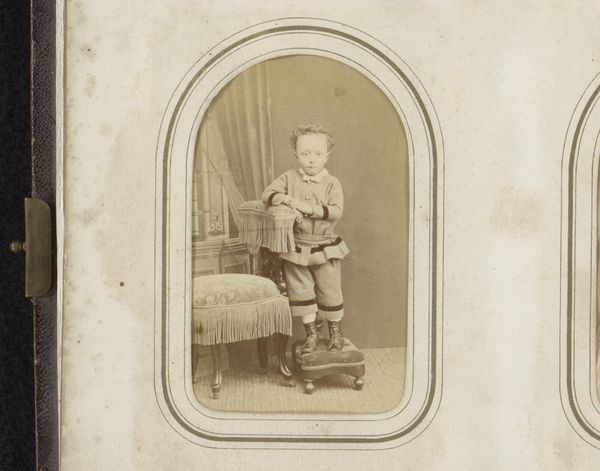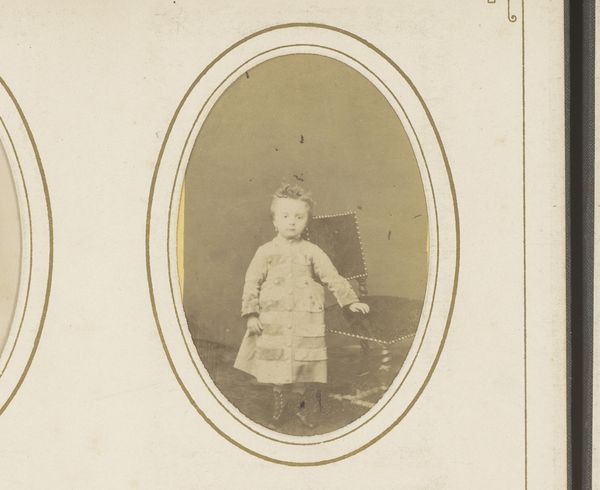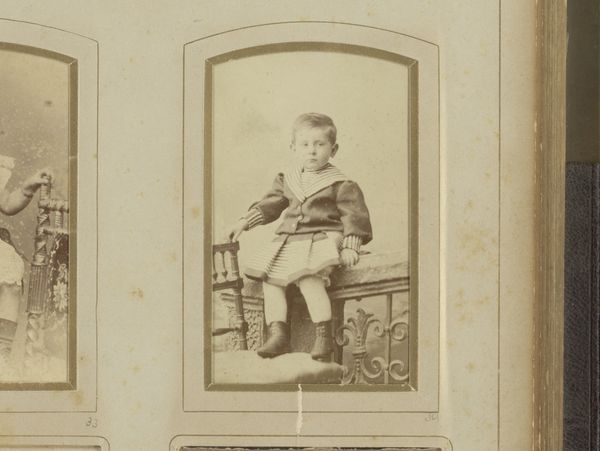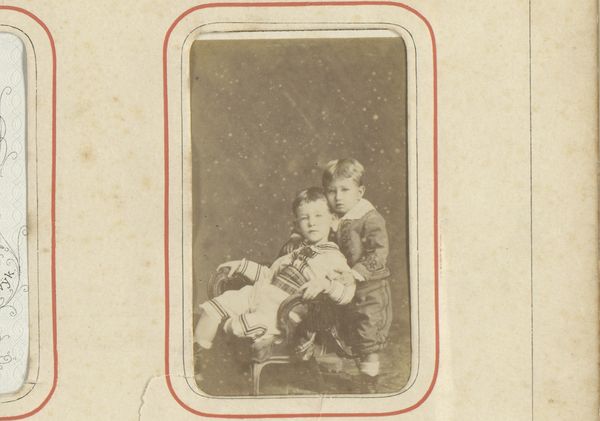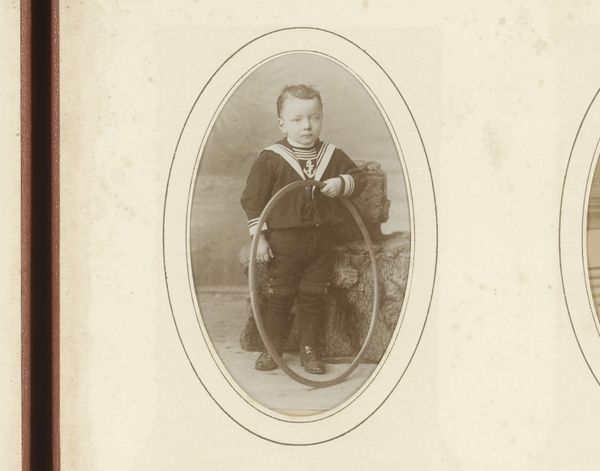
photography
#
portrait
#
photography
#
genre-painting
Dimensions: height 103 mm, width 63 mm
Copyright: Rijks Museum: Open Domain
Editor: So, here we have "Portret van een onbekend kind", by Petz & Co., created sometime between the 1870s and 1880s. It's a photograph, and it feels like a very formal, staged portrait. The child is in this ornate pram-like chair. What do you see when you look at this image? Curator: I see a carefully constructed presentation of childhood. In this era, portraiture, especially photography, became a tool for projecting social aspirations and solidifying class identity. Consider the power dynamics at play: the child as a symbol of the family’s future, positioned within a space designed to communicate status and propriety. How does the child's gaze and posture strike you? Does it convey agency, or something else? Editor: The child seems very still, almost doll-like. I guess I assumed it was just capturing a cute kid. Curator: But think about the implications of a studio setting, the direction of the photographer, the social constraints on how children from privileged backgrounds were expected to behave. The stiff pose, the controlled expression - they speak volumes about societal expectations placed on children, particularly within bourgeois families, at that time. Doesn't the photograph then also tell us something about lost childhood? How might this differ across class and race? Editor: That's a great point. I was so focused on the immediate image I didn't think about what it tells us about that historical period. Curator: Exactly. Art, even seemingly simple portraiture, serves as a document of social history, prompting us to examine assumptions about identity, gender, and class that continue to resonate today. Editor: Thanks, I'll never see a photograph the same way again. Curator: Nor I, it’s been enriching to share these thoughts!
Comments
No comments
Be the first to comment and join the conversation on the ultimate creative platform.
